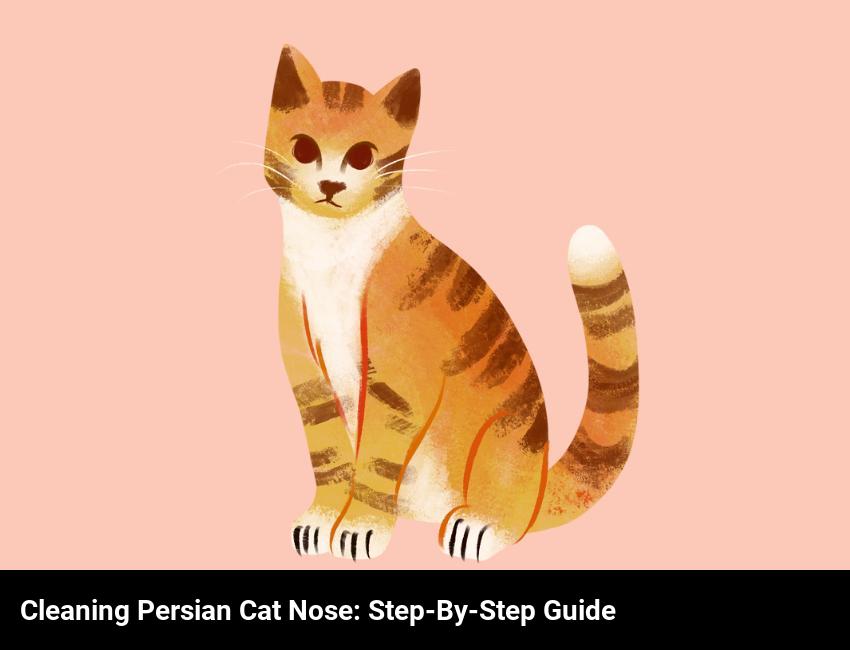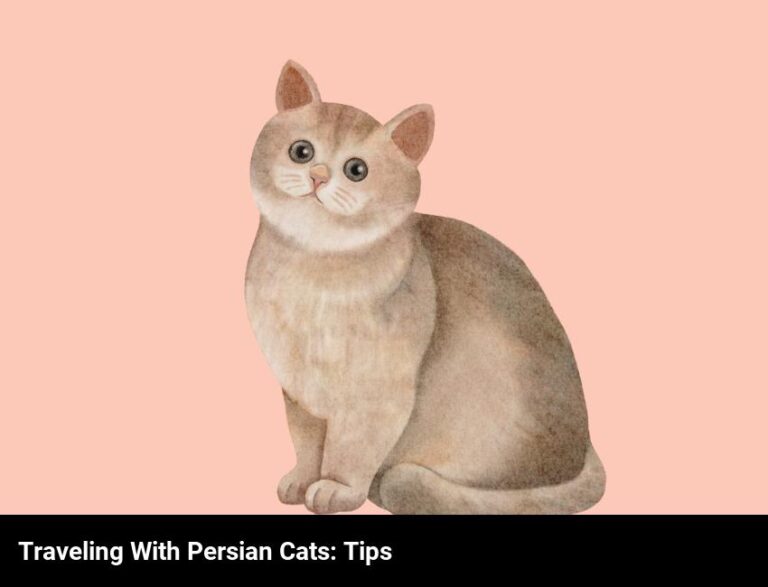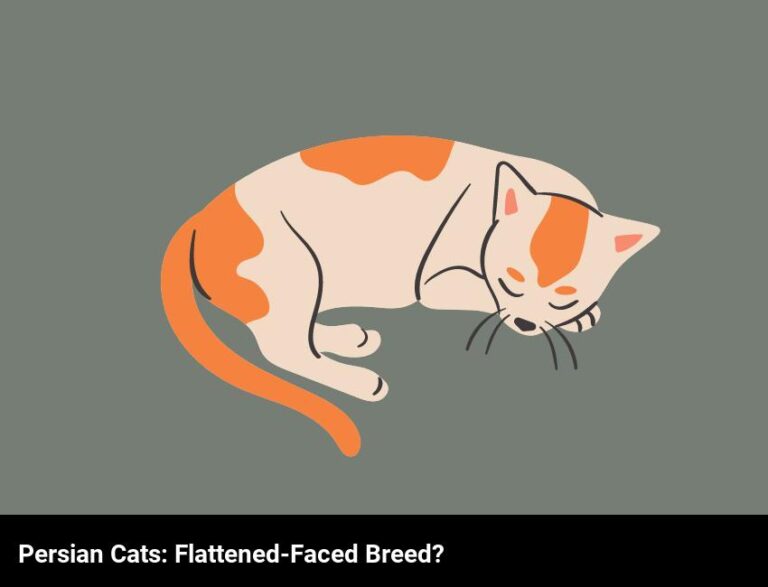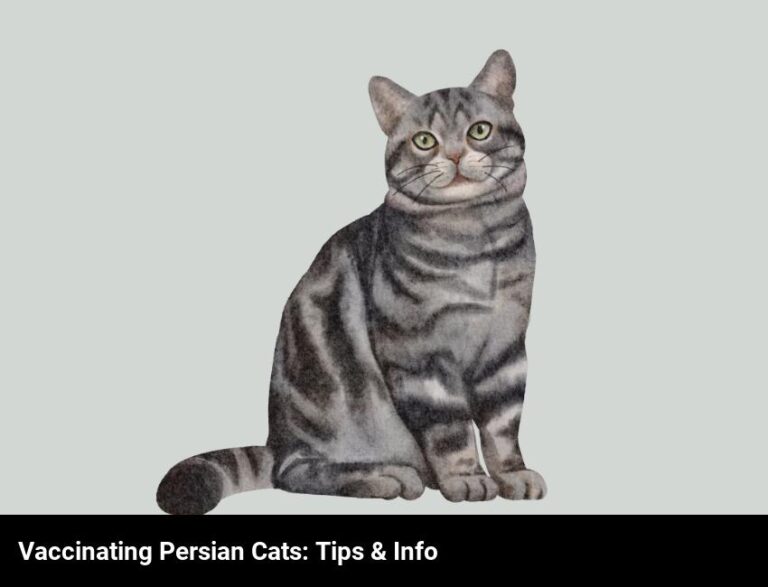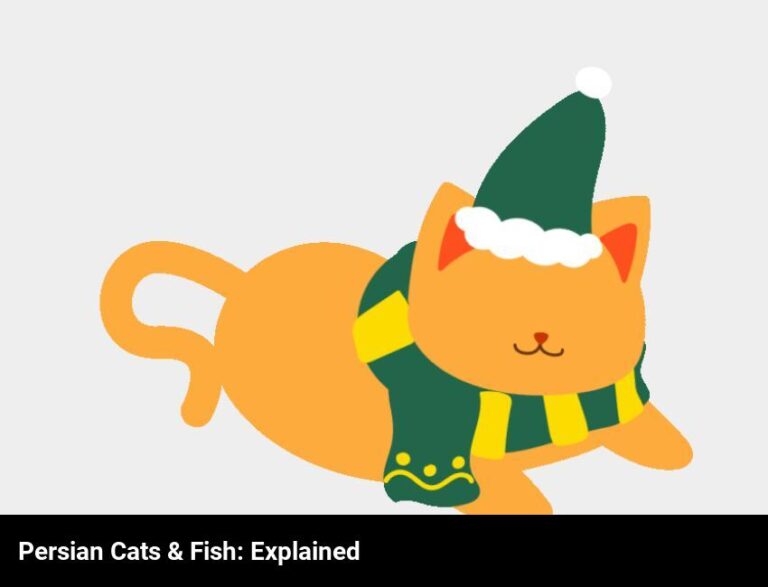Cleaning Your Persian Cat’s Nose: Step-By-Step Guide
Gently wipe your Persian cat’s nose with a damp cloth daily. Clean the crusty discharge with a cotton ball and warm water. Rinse the cotton ball in warm water and repeat until your cat’s nose is clean. Dry the nose with a soft towel.
As someone who has owned a Persian cat for many years, I can attest to the importance of cleaning their noses—it’s vital for their health and wellbeing. While it may seem daunting at first, once you are familiar with the process it can be done in minutes. In this blog, I’ll provide a step-by-step guide on how to clean your Persian cat’s nose, as well as advice on how to make it an easier and less stressful experience for both you and your cat.
I’ll also be offering advice on what to look out for after cleaning your Persian cat’s nose, as well as tips on how to maintain a healthy and clean nose on your pet.
Why is cleaning your persian cat’s nose important?
Cleaning your Persian cat’s nose is important for several reasons. First, it helps to remove dirt, dust, and debris that can accumulate in the nose and cause breathing problems. Additionally, it helps to keep your cat’s nose moist and healthy, and it helps to reduce the chances of developing bacterial infections or other health issues. Finally, it also helps to keep your cat’s coat looking clean and shiny! It’s an easy and effective way to keep your Persian cat looking and feeling their best.
In order to clean your Persian cat’s nose, you’ll need a few basic supplies. You’ll need a soft cloth, cotton balls, a mild pet shampoo, and distilled water. Start by moistening the soft cloth with the distilled water, and gently wiping the cat’s nose. If there is any dirt or debris present, use the cotton balls to gently remove it. Finally, use the mild pet shampoo to complete the cleaning process.
It’s important to clean your Persian cat’s nose regularly, but not too often. Ideally, you should aim for about once or twice a week, depending on how often your cat goes out and gets dirty. Cleaning your cat’s nose too often can cause dryness and irritation, so it’s best to stick to the schedule that works best for your cat.
By following a regular routine of cleaning your Persian cat’s nose, you can help ensure that your cat stays healthy and happy.
What supplies are needed to clean your persian cat’s nose?
Cleaning your Persian cat’s nose doesn’t have to be complicated or expensive. All you need are a few simple supplies that you can get at any pet store.
First, you’ll need a soft, damp cloth. This will be your main tool for wiping away excess dirt and debris from your cat’s nose. You should also have a gentle, unscented soap on hand, as well as an eye dropper for administering the soap solution to your cat’s nose.
Next, you’ll need some cotton balls. These will be used to gently scrub away any stubborn dirt and grime. You should also have some paper towels handy for drying off your cat’s nose after you’re finished cleaning it.
Finally, you’ll need some warm water. This will help to remove any soap residue that may have been left behind after you’ve finished cleaning your cat’s nose.
How do you prepare your persian cat for nose cleaning?
Preparing your Persian cat for nose cleaning is an important part of their grooming routine. It’s important to make sure that the experience is as pleasant and stress-free as possible for both you and your cat.
First, make sure that you have the correct grooming tools. A clean, soft towel, cotton balls, and a cat-safe cleansing solution are essential. Lay out all the supplies needed ahead of time so you don’t have to worry about them while trying to groom your pet.
Next, give your cat a few treats before starting the nose cleaning. This will help your pet relax and feel comfortable. It’s important that your cat feels safe and secure throughout the process.
Finally, make sure that you are in a comfortable, quiet environment. This will help your cat feel at ease, and it will make the process smoother. If you are in a noisy or uncomfortable place, it can be stressful for your pet and make them less likely to cooperate.
With these tips, you’re ready to start cleaning your Persian cat’s nose. Follow these steps and you’ll have a stress-free experience for both you and your pet.
What are some tips for maintaining healthy and clean nose on your persian cat?
Regularly check your Persian cat’s nose for any signs of infection, such as redness, swelling, or any discharge.
- If your cat’s nose is dry and cracked, use a damp cloth to gently wipe away any crust or debris, and then apply a small amount of petroleum jelly or a similar product.
- Clean your cat’s nose with a gentle, unscented soap and warm water. Make sure to rinse the soap off completely, and then use a damp cloth to remove any excess moisture.
- Give your Persian cat a weekly bath to keep the nose and other areas of the face clean.
- Feed your cat a diet rich in omega-3 fatty acids and other healthy fats to keep their nose moist and healthy.
- Make sure to regularly check your cat’s nose for any signs of infection, such as redness, swelling, or any discharge.
- If your cat’s nose is dry and cracked, use a damp cloth to gently wipe away any crust or debris, and then apply a small amount of petroleum jelly or a similar product.
What is the step-by-step process for cleaning your persian cat’s nose?
Cleaning your Persian cat’s nose is an important part of their grooming routine. It’s quick, easy and will help keep your cat healthy and happy. Here’s a step-by-step guide to help you get the job done:
Step 1: Gather the supplies you need. You’ll need a damp cloth, cat shampoo, and a soft brush.
Step 2: Get your Persian cat comfortable. If your cat is stressed, it will be harder to clean their nose. Give them a few treats and some petting to help them relax.
Step 3: Wet the cloth and gently wipe around your cat’s nose. This will help remove any dirt and debris.
Step 4: Apply a small amount of cat shampoo to the cloth and wipe around your cat’s nose. Pay special attention to the nostrils and corners of their mouth.
Step 5: Use a soft brush to help remove any remaining dirt and shampoo. Be gentle and take your time.
Step 6: Rinse your cat’s nose with a damp cloth. Make sure to get rid of all the shampoo.
Step 7: Dry your cat’s nose with a soft towel.
You’ve done it! Now your Persian cat’s nose is clean and ready for another day. With routine cleaning, you can help keep your cat healthy and happy.
What should you do to make cleaning your persian cat’s nose easier?
If you have a Persian cat, you know that cleaning their nose can be a bit tricky. Fortunately, there are a few simple steps you can take to make the process easier.
First, make sure you have the right supplies. You’ll need a cotton ball, some warm water and a mild cat shampoo. If you want, you can also get some unscented baby wipes.
Second, make sure your cat is comfortable. Gently stroke their fur and give them some treats to distract them. Once they’re relaxed, you can start cleaning their nose.
Third, dip the cotton ball in the warm water and gently wipe away any dirt or discharge on the nose. Take care not to press too hard, as this could irritate their skin. If you need to, use the baby wipes to help remove any stubborn dirt.
Fourth, you’ll want to use the mild shampoo to clean their nose. Place a few drops of the shampoo onto the cotton ball and gently wipe away any remaining dirt or discharge. Rinse the cotton ball and repeat this step until all the dirt and discharge is removed.
Finally, once you’re finished cleaning, make sure to give your Persian cat some treats as a reward for being so patient. This will help make sure that they’re more willing to let you clean their nose in the future.
Cleaning your Persian cat’s nose doesn’t have to be a headache. By following these simple steps, you can make the process much easier and more enjoyable for both you and your cat.
What should you do if your persian cat doesn’t like nose cleaning?
If your Persian cat doesn’t like nose cleaning, don’t worry—it’s common for cats to be anxious when it comes to this procedure. The most important thing to do is remain calm and patient. Here are a few tips to help you get your feline friend comfortable with nose cleaning:
Start slow. If your cat is feeling anxious, take it slow. Offer a reward after each step, such as a treat or some gentle petting.
Introduce the cotton ball. Instead of starting with the actual cleaning, introduce your cat to the cotton ball first. Let them sniff and explore the cotton ball. Again, offer a reward after each step.
Gently touch their nose. Once your cat is comfortable with the cotton ball, start by gently touching their nose with your finger. Offer a reward after each step.
Progress to wiping. Once your cat is comfortable with being touched on the nose, start by wiping their nose with the cotton ball. Make sure to go slow and offer a reward after each step.
Clean with a damp cloth. If your cat still doesn’t like the idea of being wiped, try cleaning their nose with a damp cloth. It will help to remove any dirt or debris. Again, reward your cat for their patience.
Make it a positive experience. It’s important to make nose cleaning a positive experience for your cat. Offer lots of rewards, such as treats and praise.
With patience and positive reinforcement, your Persian cat should eventually be comfortable with nose cleaning.
What are some common issues you should look out for after cleaning your persian cat’s nose?
Now that you’ve gone through the step-by-step guide of cleaning your Persian cat’s nose, it’s important to be aware of some common issues that can arise after the cleaning process.
Firstly, your cat may experience some sensitivity in their nose. This is normal and should go away in a few days. If the sensitivity remains for longer, it is best to consult a vet to make sure your cat is not having an allergic reaction.
Secondly, look out for any signs of infection. If your cat’s nose is swollen, red, or has pus-like discharge, it may be infected and needs to be treated immediately.
Thirdly, it is important to keep their nose clean and dry. If your cat’s nose is damp or moist, it is more prone to infection, so you should dry it with a soft cloth after the cleaning process.
Fourthly, watch out for any signs of irritation. If your cat is having difficulty breathing or rubbing their nose on furniture, there may be a problem with the cleaning process and you should consult your vet.
Finally, keep an eye on their eating habits. If they seem to be having difficulty eating or drinking, it is important to see a vet to make sure their nose is not blocking their ability to eat or drink.
By keeping an eye out for any of these issues, you can ensure that your Persian cat’s nose stays healthy and clean.

Frequently Asked Questions
What are some tips for cleaning your persian cat’s nose?
To keep your Persian cat’s nose clean, here are some useful tips: Gently wipe its nose with a damp cloth once or twice a day; use a soft saline solution to clean the nostrils; trim excess fur around the nose to reduce buildup; and use a cotton ball to wipe away any dirt or debris.
Are there any natural alternatives to cleaning your persian cat’s nose?
Yes, there are natural alternatives to cleaning your Persian cat’s nose. These include using a cotton ball soaked in warm water and a mild shampoo, or a pet-safe cleaning solution. You can also use a soft cloth dampened with warm water to wipe away any dirt and debris from your cat’s nose. Doing this regularly can help keep your cat’s nose clean and healthy.
Is there a risk of irritation when cleaning your persian cat’s nose?
Yes, there is a risk of irritation when cleaning your Persian cat’s nose. Cats may not like having their nose touched, so it is important to be gentle and not irritate them. If your cat does get irritated, stop immediately and try again later.

